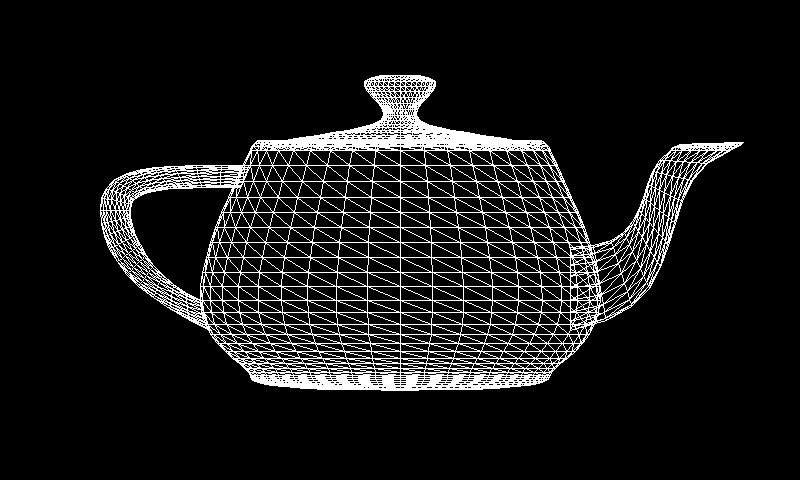The Unceasing Quest for Photorealism: A New Frontier in Unreal Engine
In the ever-evolving landscape of Gaming News, the pursuit of photorealism remains the holy grail for developers and players alike. For years, the gap between pre-rendered cinematic CGI and real-time interactive graphics has been steadily closing, driven by innovations in both software and hardware. The latest groundbreaking development comes from the powerful synergy between Epic Games’ Unreal Engine and NVIDIA’s cutting-edge GPU technology. A new feature emerging from NVIDIA’s experimental Unreal Engine branch, NvRTX, is poised to shatter existing limitations on geometric complexity. Known as RTX Mega Geometry, this technology represents a fundamental shift in how virtual worlds are constructed and rendered, promising a future for PC Gaming and Console Gaming where detail is virtually limitless. This article delves deep into the technical underpinnings of RTX Mega Geometry, its profound implications for Game Development, and what it means for the next generation of immersive experiences in AAA Games and beyond.
What is NvRTX? Unpacking RTX Mega Geometry
To understand the significance of RTX Mega Geometry, one must first understand its birthplace: NvRTX. This isn’t a feature you’ll find in the standard public release of Unreal Engine just yet. Instead, it resides within a specialized, publicly available development branch of the engine maintained by NVIDIA. This branch serves as an incubator for next-generation rendering technologies, designed to harness the full potential of their RTX Graphics Cards and associated Gaming Hardware.
Beyond the Main Branch: The Role of NvRTX
NvRTX is essentially a preview of the future. It’s a development pipeline where NVIDIA’s engineers can integrate and test bleeding-edge features like advanced ray tracing algorithms, next-generation DLSS implementations, and now, RTX Mega Geometry. Developers can access this branch to experiment with technologies that may eventually be integrated into the main Unreal Engine, released as plugins, or influence the direction of future Gaming Tech. It provides a direct line to the most advanced rendering techniques, allowing studios to prepare their art pipelines and technical teams for the tools of tomorrow. This forward-looking approach is crucial for an industry where visual fidelity is a key differentiator, impacting everything from single-player RPG Games to fast-paced Competitive Gaming arenas.
Introducing RTX Mega Geometry: A New Paradigm for Detail
At its core, RTX Mega Geometry is a revolutionary rendering pipeline engineered to handle scenes with an astronomical amount of geometric detail—we’re talking billions or even trillions of triangles. This directly addresses one of the most significant bottlenecks in modern real-time ray tracing. While Unreal Engine 5’s Nanite technology brilliantly solved the problem of geometric density for rasterization, allowing for film-quality assets to be rendered in real-time, its benefits for ray tracing have been more limited. RTX Mega Geometry is NVIDIA’s answer, built from the ground up specifically for the demands of a fully ray-traced world. It aims to do for ray tracing what Nanite did for rasterization: effectively eliminate the concept of a “polygon budget” and free artists from the tedious process of creating simplified, low-poly models with baked normal maps for performance.

Under the Hood: The Technical Architecture of RTX Mega Geometry
The magic behind RTX Mega Geometry lies in a complete rethinking of how geometry is stored, processed, and rendered by the GPU. It moves away from traditional methods that buckle under the weight of extreme complexity and adopts a more intelligent, on-demand approach that is perfectly suited for the parallel processing power of modern Graphics Cards.
A Paradigm Shift from Traditional BVHs
In conventional ray tracing, the GPU builds a Bounding Volume Hierarchy (BVH) for the scene. A BVH is a data structure that organizes all the geometry into a tree of nested boxes, allowing the GPU to quickly discard large parts of the scene that a ray won’t intersect. However, when a scene contains billions of triangles, this BVH itself becomes enormous. It consumes vast amounts of VRAM, takes a long time to build, and can become inefficient to traverse. RTX Mega Geometry circumvents this problem by fundamentally changing how the geometry is represented. Instead of a single, monolithic BVH for the entire scene, it uses a system of compressed, virtualized geometry that is streamed and processed on the fly.
Micro-Meshes and Intelligent Data Streaming
The core concept of this new pipeline is the “micro-mesh.” Complex, high-polygon source models are broken down into tiny, manageable chunks of triangles. These micro-meshes are then heavily compressed and stored, ready to be streamed to the GPU only when needed. This is analogous to how modern game engines stream textures, but applied to the geometry itself. When a ray is traced through the scene, the system determines which micro-meshes are potentially visible and streams only that data to the GPU for processing. This “just-in-time” approach dramatically reduces the memory footprint and ensures that the GPU’s powerful RT Cores are only working on the data that truly matters for the final image. This sophisticated data management is a cornerstone of modern Game Design, enabling the creation of vast, detailed worlds seen in today’s top MMORPG News and open-world titles.
What This Means for Developers and the Gaming Experience
The implications of a technology like RTX Mega Geometry are far-reaching, promising to transform workflows for developers and elevate the visual experience for gamers to an entirely new level. It’s a development that will be closely watched by the entire Gaming Industry, from indie studios to major publishers featured in Epic Games News.
For Game Developers: A Revolution in Asset Creation

For 3D artists and technical artists, this technology is a game-changer. The traditional asset pipeline is often a process of compromise, where incredibly detailed source models created in programs like ZBrush or from photogrammetry scans must be painstakingly optimized. This involves creating multiple Levels of Detail (LODs), retopologizing meshes, and baking high-frequency detail into normal maps—all to fit within a strict performance budget. RTX Mega Geometry promises to make much of this process obsolete.
- Unleashed Creativity: Artists can import film-quality assets directly into the engine, preserving every intricate detail without worrying about polygon counts.
- Streamlined Workflows: This drastically reduces the time and resources spent on manual optimization, allowing development teams to iterate faster and focus more on the creative aspects of world-building and Game Design.
- New Possibilities: It enables the creation of environments with a density and fidelity previously unthinkable in real-time applications, from sprawling, realistic cities in a new Battle Royale map to historically accurate digital reconstructions for VR Gaming experiences.
For Gamers: An Unprecedented Leap in Immersion
For the end-user, the difference will be staggering. The visual artifacts and compromises we’ve grown accustomed to—like low-resolution textures on distant objects or flat-looking surfaces meant to simulate detail—will begin to disappear. Imagine playing a new FPS Game set in a crumbling ruin where every brick, crack, and piece of debris is a distinct geometric object, all casting and receiving physically accurate ray-traced shadows and light. Or an open-world RPG Game where a forest floor is not a flat plane with a leaf texture, but a complex surface composed of millions of individual, fully-modeled leaves, twigs, and stones. This level of granular detail, when combined with advanced ray tracing for global illumination and reflections, will create a sense of presence and realism that pushes the boundaries of the Gaming Experience, making virtual worlds feel more tangible and alive than ever before.
Navigating the Bleeding Edge: Practical Considerations and Future Outlook
While the promise of RTX Mega Geometry is immense, it’s important to approach it with a realistic perspective. This is bleeding-edge technology, and its path to mainstream adoption will involve challenges and considerations for both developers and the Gaming Community.

The Advantages and Current Limitations
The primary advantage is clear: a generational leap in geometric detail for fully ray-traced environments. However, the limitations are equally important to acknowledge. As a feature within an experimental engine branch, it is not yet production-ready for large-scale commercial projects. Stability, performance, and workflow integration are still evolving. Furthermore, this technology is inherently demanding and will require high-end Gaming PCs equipped with the latest NVIDIA RTX Graphics Cards to run effectively. The performance cost, while being optimized, will be a significant factor, and developers will need to balance visual fidelity with achievable frame rates, a constant challenge discussed in Game Reviews and technical analyses.
The Path to Mainstream Adoption
The journey from a tech demo to a standard feature in games on Steam or next-generation consoles is a long one. We can expect this technology to mature within the NvRTX branch before a more stable version is potentially integrated into a future release of Unreal Engine or offered as a plugin. Its development will also undoubtedly spur competition, pushing AMD and Intel to advance their own solutions for handling massive geometric datasets in ray tracing. For developers, the best practice is to start experimenting now. Download the NvRTX branch, explore the demos, and understand the new art pipeline paradigms. This preparation will provide a significant advantage when the technology becomes ready for prime time, ensuring the next wave of titles, from Indie Games to blockbuster franchises like Call of Duty or Fortnite, can leverage this incredible power.
Conclusion: A Glimpse into the Future of Digital Worlds
NVIDIA’s RTX Mega Geometry, showcased within its NvRTX branch for Unreal Engine, is more than just an incremental update; it’s a foundational technology that redefines the limits of real-time rendering. By solving the critical bottleneck of geometric complexity for ray tracing, it paves the way for a new era of visual fidelity. This innovation empowers artists to work without constraints and promises gamers a level of immersion and realism previously confined to cinematic pre-renders. While still in its early stages, RTX Mega Geometry offers a tantalizing and exciting preview of the future of Video Games. It signals a time when the distinction between the real and the virtual will become ever more blurred, driven by the relentless march of Gaming Tech and the creative vision of developers around the world.












